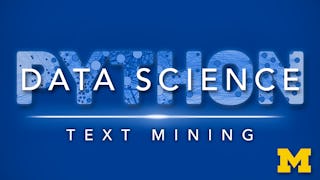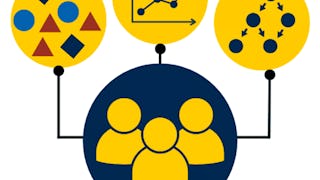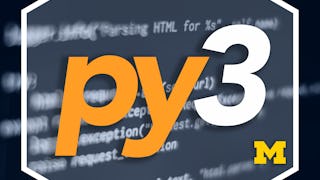In “Applied Information Extraction in Python,” you will learn how to extract useful information from free-text data, which is a type of string data created when people type. Examples of free-text data include names of people or organizations, location information such as cities and zip codes, or other elements like stock prices or clinical diagnoses. Free-text data is found everywhere, from magazine articles to social media posts, and can be complex to analyze.
通过 Coursera Plus 解锁访问 10,000 多门课程。开始 7 天免费试用。


Applied Information Extraction in Python
包含在 中
您将学到什么
Develop skills to process and interpret information presented in free-text data.
Identify the major classes of named entity recognition (NER) and implement, with guidance, state-of-the-art machine learning techniques for NER.
Compare, contrast, and select between multiple machine learning and deep learning approaches for NER.
Explore Large Language Models and configure a Transformer-based pipeline to extract entities of interest from a text dataset.
您将获得的技能
要了解的详细信息

添加到您的领英档案
June 2025
14 项作业
了解顶级公司的员工如何掌握热门技能

积累特定领域的专业知识
- 向行业专家学习新概念
- 获得对主题或工具的基础理解
- 通过实践项目培养工作相关技能
- 获得可共享的职业证书

该课程共有4个模块
This module introduces information extraction, covering key tasks and approaches for extracting relevant information from text. You will explore pattern-based and list-based methods to identify and extract information from text data, applying these techniques across diverse domains. You will also develop an end-to-end NLP pipeline to extract named entities from free text using terminology resources.
涵盖的内容
7个视频5篇阅读材料3个作业1个编程作业1个讨论话题1个非评分实验室
In Module 2, you'll dive into the world of named entity recognition (NER). You'll learn to define and identify named entities, and understand how to tackle related tasks by framing them as NER challenges. We'll explore how to use resources like standardized terminology and named gazettes to enhance NER. You'll also gain hands-on experience by training a machine learning model for sequence classification using an annotated text dataset. Finally, we'll discuss the pros and cons of different Markov models for NER, equipping you with the insights needed for practical applications.
涵盖的内容
7个视频6篇阅读材料4个作业1个编程作业1个非评分实验室
In Module 3, focused on neural network models, you will explore the differences between training deep learning models and traditional machine learning models. You'll learn how to model and train a neural network-based classifier, as well as formulate text as features for NER model training. We will discuss the pros and cons of deep learning approaches. You'll design a neural network model to identify concepts from free text and apply a trained deep learning model to solve NER tasks.
涵盖的内容
5个视频4篇阅读材料4个作业1个编程作业1个非评分实验室
In this module, you'll dive into the power of deep learning models in diverse fields such as healthcare and sports commentary. You'll learn how to build neural network models that are fine-tuned for specific tasks and discover how to set up a deep neural network for detecting key entities. We'll also introduce you to the world of large language models, showcasing their transformative capabilities and applications in information extraction.
涵盖的内容
5个视频4篇阅读材料3个作业1个编程作业
获得职业证书
将此证书添加到您的 LinkedIn 个人资料、简历或履历中。在社交媒体和绩效考核中分享。
位教师

从 Machine Learning 浏览更多内容
 状态:免费试用
状态:免费试用University of Michigan
 状态:免费试用
状态:免费试用University of Michigan
 状态:免费试用
状态:免费试用University of Michigan
 状态:免费试用
状态:免费试用University of Michigan
人们为什么选择 Coursera 来帮助自己实现职业发展




常见问题
To access the course materials, assignments and to earn a Certificate, you will need to purchase the Certificate experience when you enroll in a course. You can try a Free Trial instead, or apply for Financial Aid. The course may offer 'Full Course, No Certificate' instead. This option lets you see all course materials, submit required assessments, and get a final grade. This also means that you will not be able to purchase a Certificate experience.
When you enroll in the course, you get access to all of the courses in the Specialization, and you earn a certificate when you complete the work. Your electronic Certificate will be added to your Accomplishments page - from there, you can print your Certificate or add it to your LinkedIn profile.
Yes. In select learning programs, you can apply for financial aid or a scholarship if you can’t afford the enrollment fee. If fin aid or scholarship is available for your learning program selection, you’ll find a link to apply on the description page.
更多问题
提供助学金,



